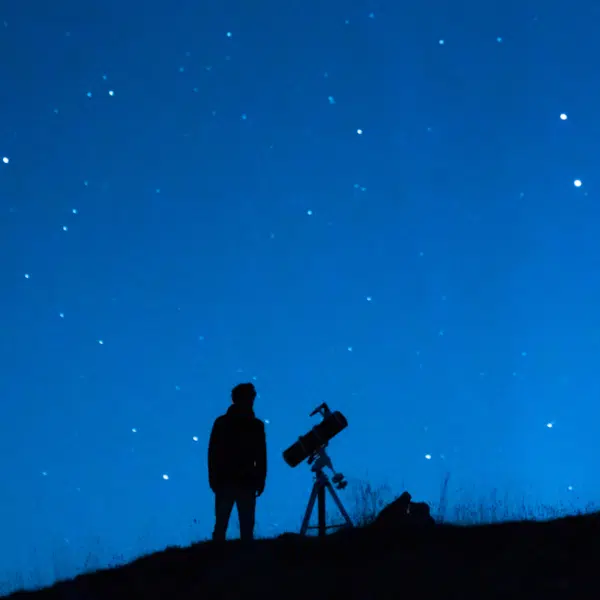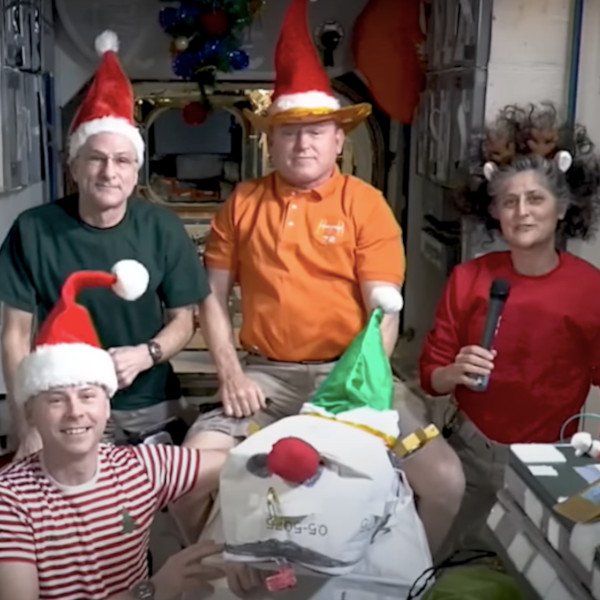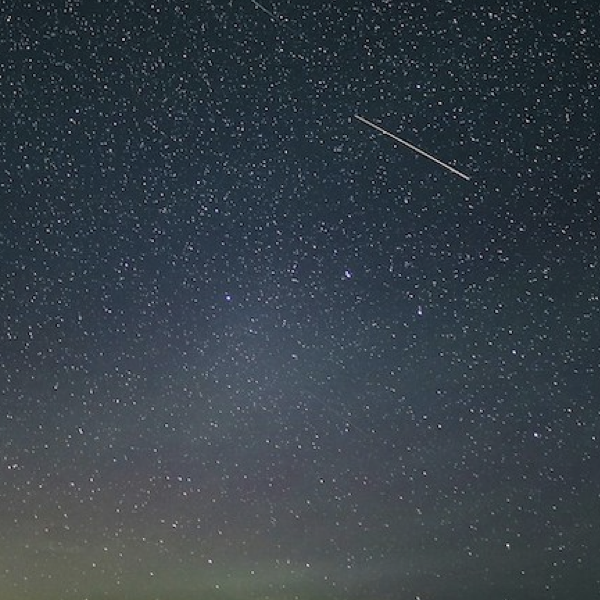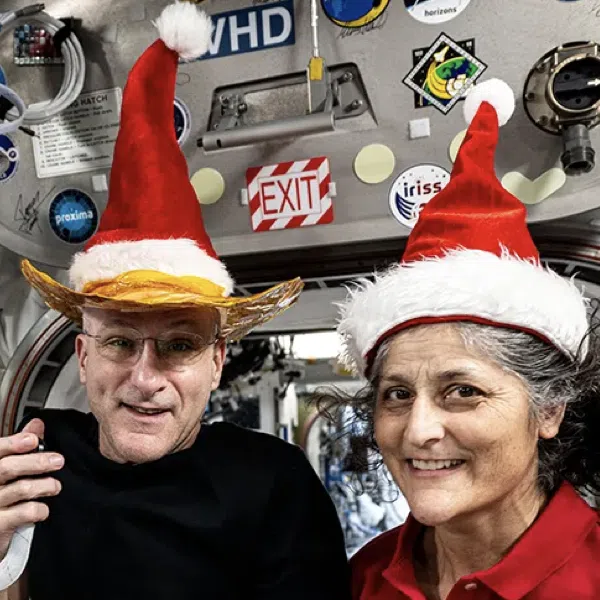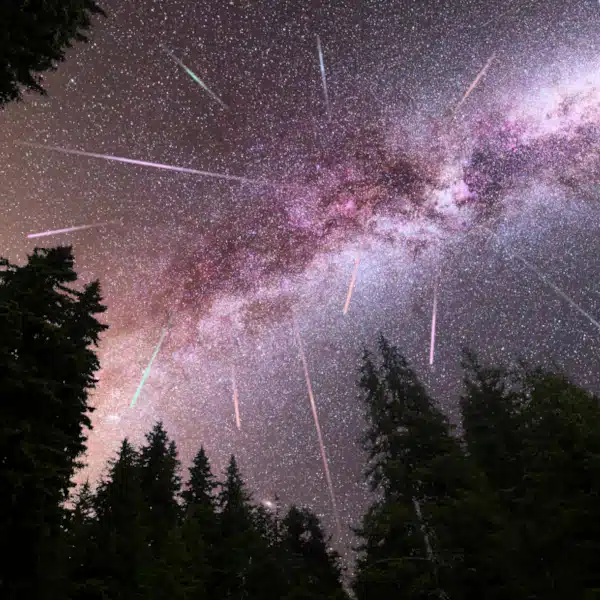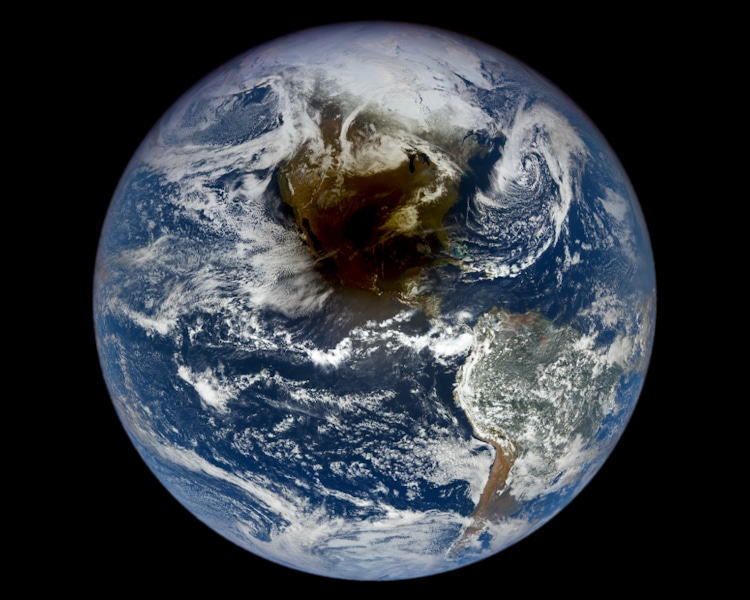
Photo: NASA Earth Observatory
Total solar eclipses provide a once-in-a-life-time spectacle. Turning the sky into a deep-twilight blue, the Moon covers the Sun, only leaving its bright corona visible as some stars come out. As breathtaking as it is on the ground, an eclipse also offers fascinating sights from up above—although they are quite different. Images of the 2024 total solar eclipse from space, shared by NASA Earth Observatory and other institutions, reveal how this event looked from up above.
Some of the most compelling footage was captured by Geostationary Operational Environmental Satellite (GOES-16), part of a collaboration between the National Oceanic and Atmospheric Administration (NOAA) and NASA. Using its advanced baseline imager, the satellite captured the Moon’s shadow moving across North America between 4 p.m. and 11 p.m. CEST, looking like a chunky brown-black mass moving in a southwest-northeast motion.
NASA’s Earth Polychromatic Imaging Camera (EPIC) imager on the Deep Space Climate Observatory (DSCOVR) satellite had an even more insightful shot, capturing the entirety of the eclipse from its earliest stages over the Pacific Ocean through its end on the east coast of Canada, covering the continent in a dark shade. Meanwhile, the NOAA-20 weather satellite's vantage point in Earth’s orbit offered a striking side-by-side comparison. The satellite imagery shows the difference between the eclipsed portion of North America and how it looks most of the time. For an easier examination, they marked the path of totality and the state lines.
Additional to satellite imagery, some lucky people experienced the eclipse with their own eyes. Astronauts aboard the International Space Station shared their view of the eclipse 261 miles above ground. The image shows the Moon’s shadow as it covers portions of Maine and the Canadian provinces of Quebec and New Brunswick.
Hoping to make the most out of it, others chased the eclipse as long as they could, like NASA astronaut Jessica Meir. Flying aboard a T38 jet at 39,000 feet, Meir saw the eclipse cross over north Texas. “We saw the darkness approaching us from behind,” she wrote. “Soon it caught up with us and we had several minutes in totality as we chased along its path. Then we were back in the light once again. Not a bad day in the office.”
Scroll down to explore footage of the eclipse from space and the sky.
As breathtaking as it was on the ground, the eclipse also offered fascinating sights from space.
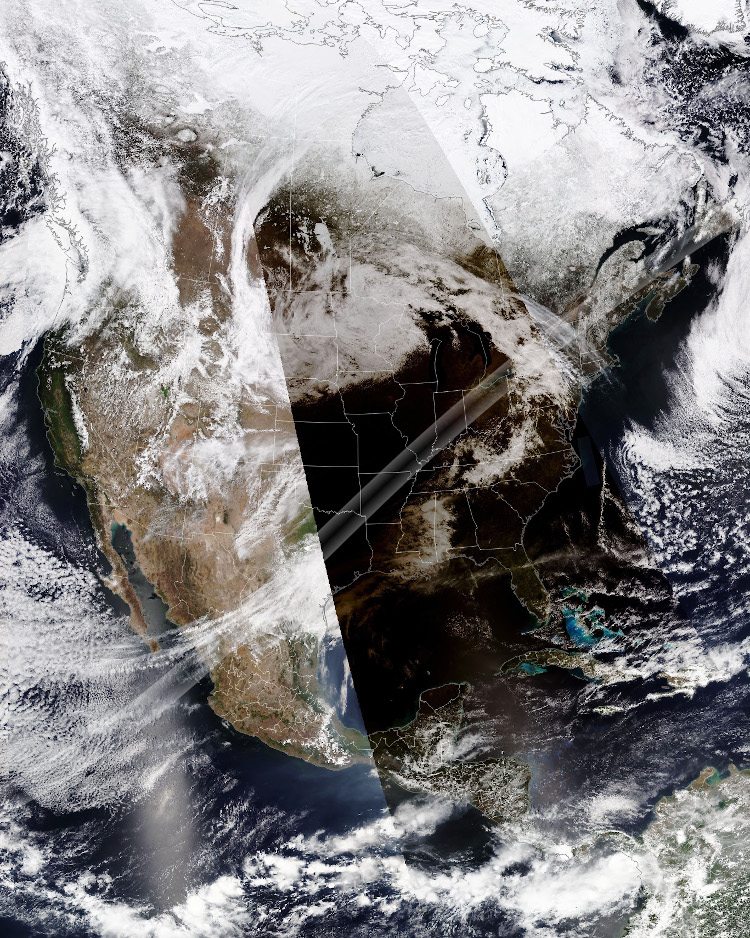
Photo: NASA Earth Observatory
Astronauts aboard the International Space Station shared their view of the eclipse 261 miles above ground.
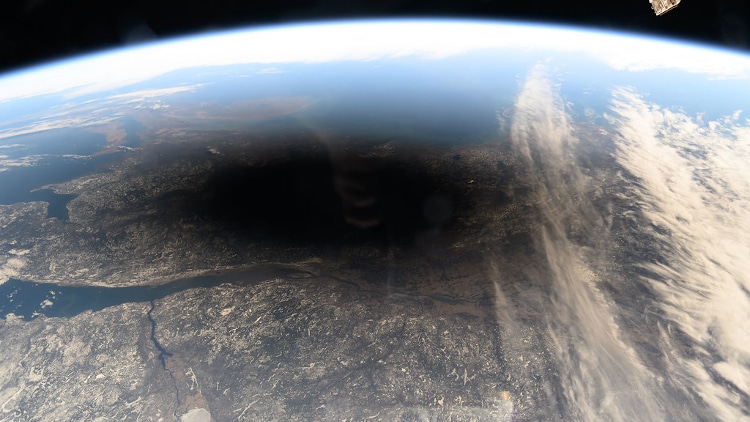
Photo: ISS / NASA
Meanwhile, the GOES-16 satellite captured the Moon's shadow traveling across North America.
Watch a replay of the moon's shadow traveling across the path of totality, seen from @NOAA’s #GOESEast satellite.#TotalEclipse #Eclipse #Eclipse2024, #TotalEclipse2024 #NOAATotalEclipse2024, #2024Eclipse pic.twitter.com/eNaRb6qoKH
— NOAA Satellites (@NOAASatellites) April 8, 2024
Watch a replay of the moon's shadow traveling across the path of totality, seen from @NOAA’s #GOESEast satellite.#TotalEclipse #Eclipse #Eclipse2024, #TotalEclipse2024 #NOAATotalEclipse2024, #2024Eclipse pic.twitter.com/eNaRb6qoKH
— NOAA Satellites (@NOAASatellites) April 8, 2024
Flying aboard a T38 jet at 39,000 feet, astronaut Jessica Meir saw the eclipse cross over north Texas.
Ver esta publicación en Instagram
h/t: [IFL Science]
Related Articles:
Epic Photos of Twin Planes Flying Through the Solar Eclipse
Former Science Teacher Hosts Eclipse Party He Promised to His Students 46 Years Ago
The Most Spectacular Photos and Videos of the 2024 Great North American Eclipse
105-Year-Old Solar Eclipse Chaser Is Ready To Watch His 13th Eclipse











































































